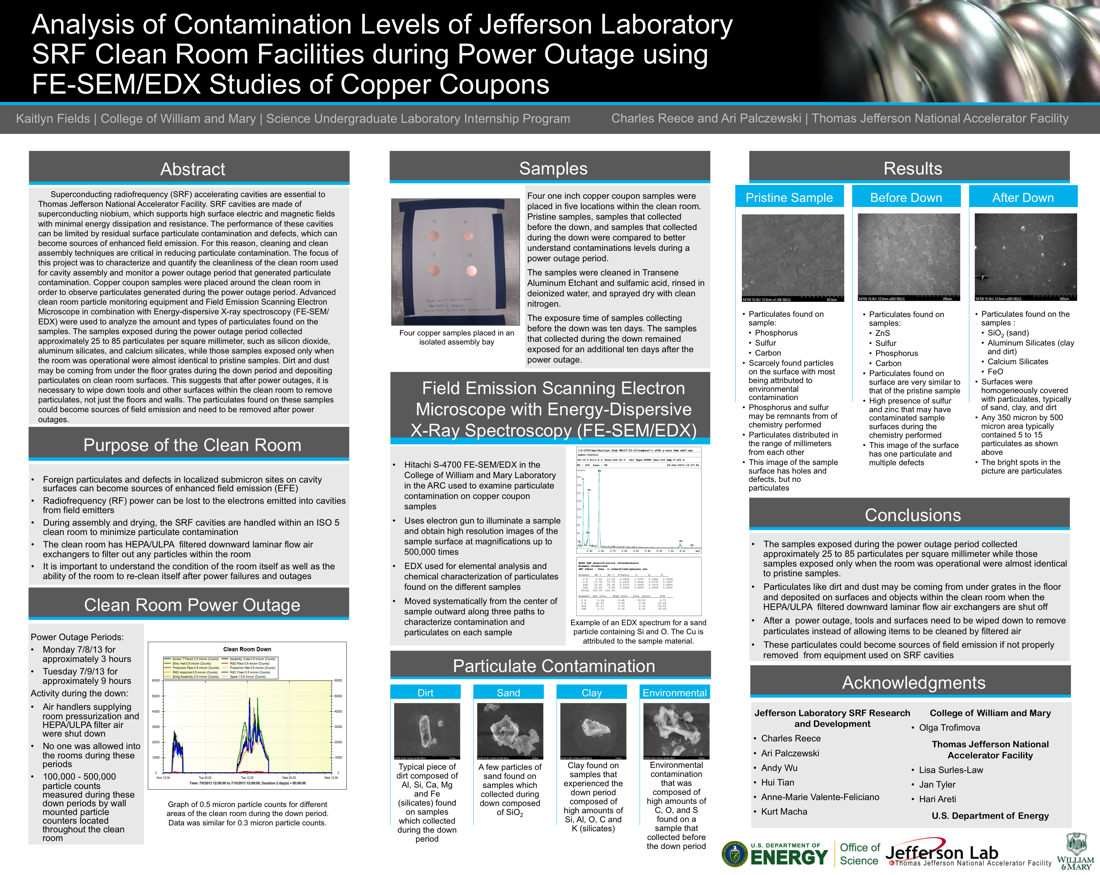Undergraduate Research at Jefferson Lab
Analysis of Contamination Levels of Jefferson Laboratory SRF Clean Room Facilities during Power Outage Using FE-SEM/EDX Studies of Copper Coupons
Student: Kaitlyn M. Fields
School: College of William and Mary
Mentored By: Ari D. Palczewski and Charles E. Reece
Superconducting radiofrequency (SRF) accelerating cavities at Thomas Jefferson National Accelerator Facility support high surface electric and magnetic fields with minimal energy dissipation and resistance. The performance of these cavities can be limited by particulate contamination, which can become a source of enhanced field emission. Clean cavity assembly techniques are critical in reducing particulate contamination. The focus of this project was to characterize the cleanliness of the clean room used for cavity assembly and monitor a power outage period that generated particulate contamination. Copper coupon samples were placed around the clean room in order to observe particulates generated during the power outage period using a Field Emission Scanning Electron Microscope with Energy-dispersive X-ray spectroscopy. The samples exposed during the power outage period collected approximately 25 to 85 particulates per square millimeter. The particulates found on these samples could become sources of field emission and need to be removed after power outages.

Citation and linking information
For questions about this page, please contact Education Web Administrator.
